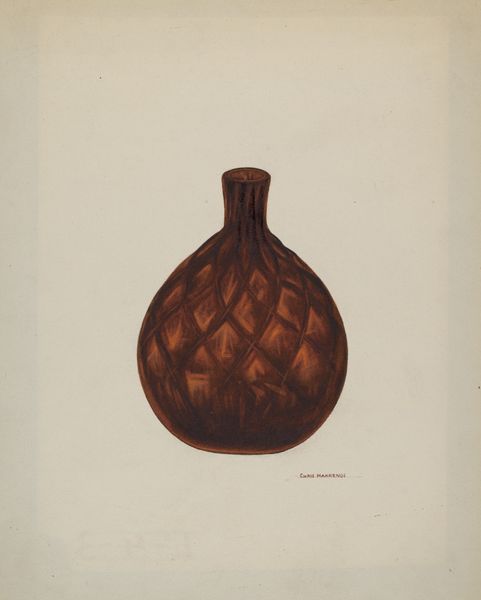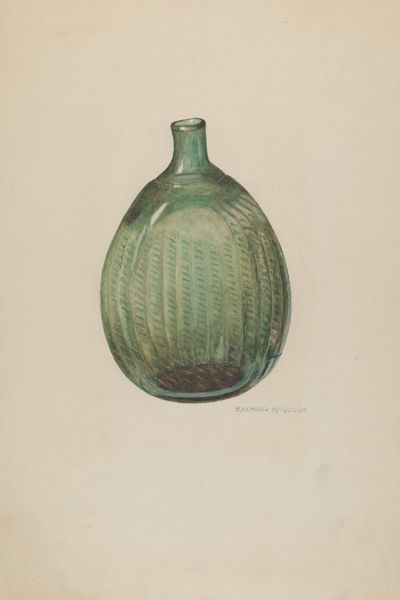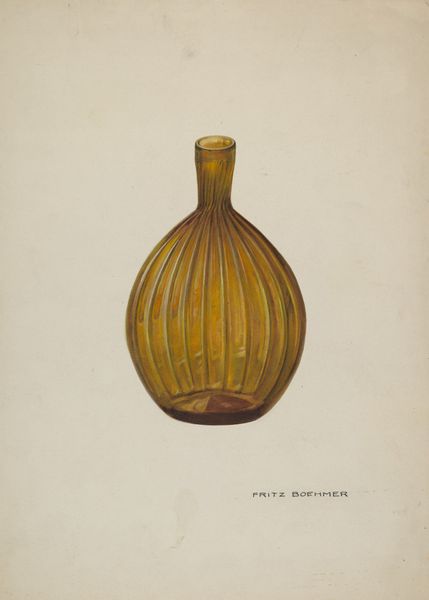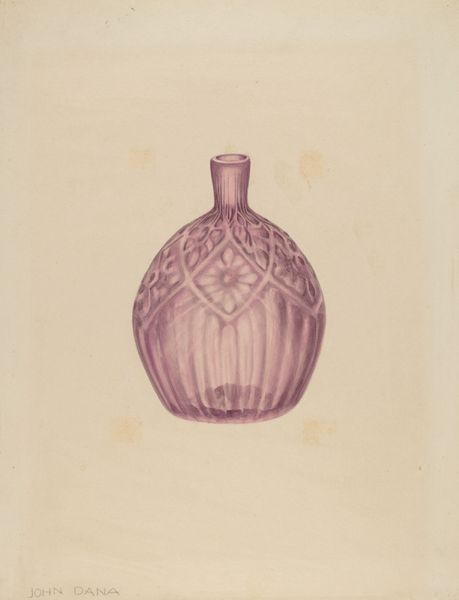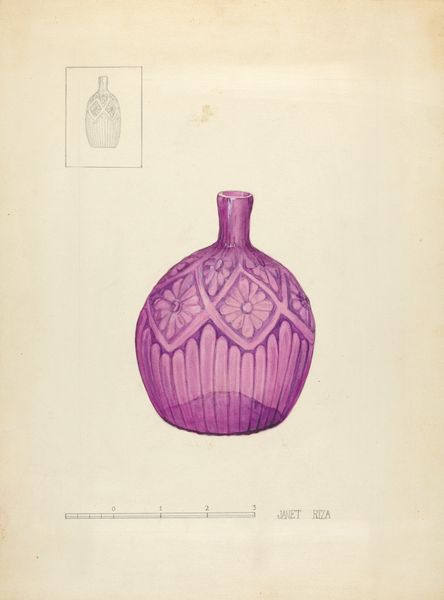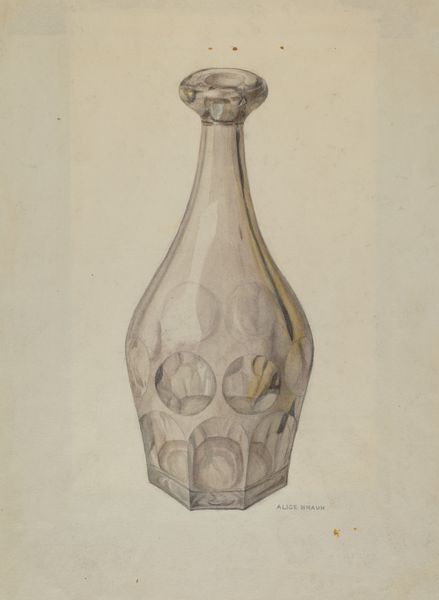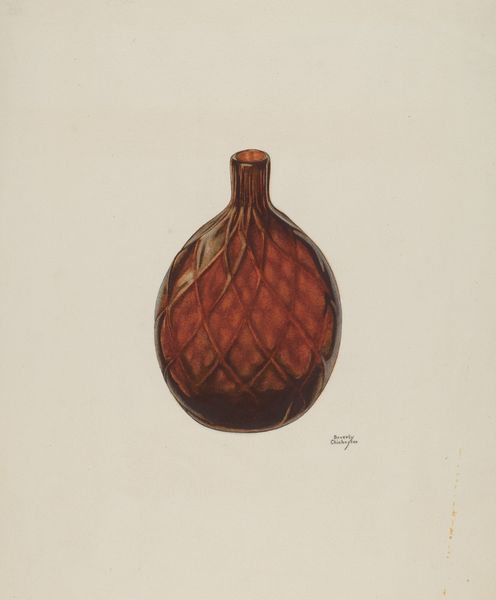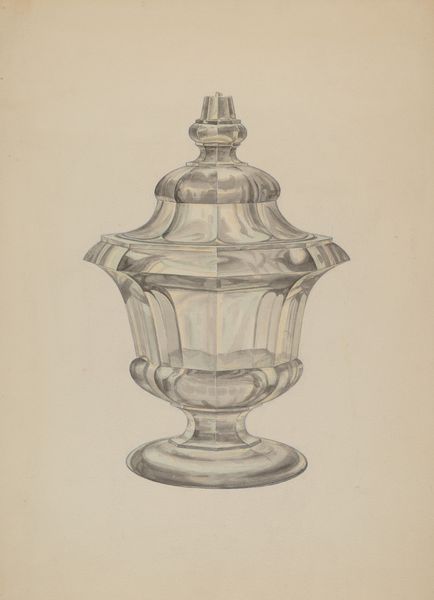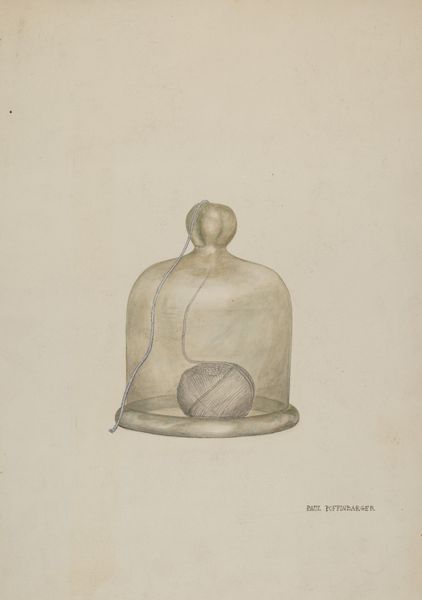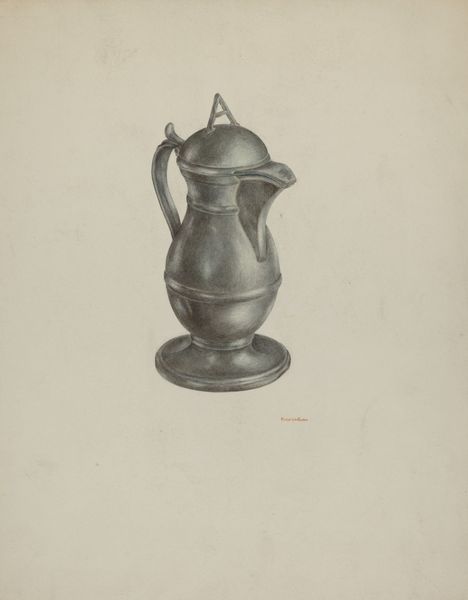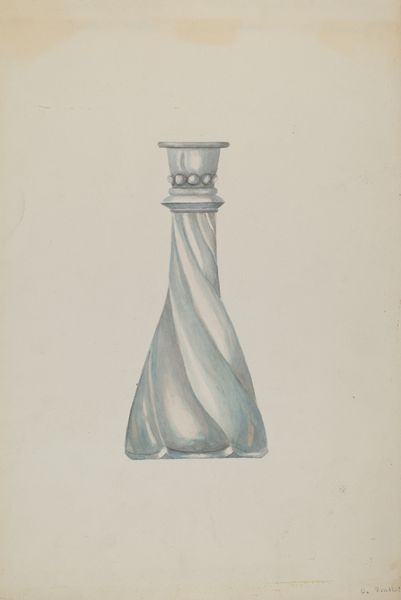
drawing, pencil
#
drawing
#
charcoal drawing
#
pencil drawing
#
pencil
#
academic-art
#
realism
Dimensions: overall: 37.3 x 27.6 cm (14 11/16 x 10 7/8 in.)
Copyright: National Gallery of Art: CC0 1.0
Editor: Here we have George Yanosko's "Sugar Bowl," circa 1941, a drawing executed in pencil. The precision of the rendering is quite captivating; it feels almost photographic despite being a drawing. How do you interpret this work? Curator: Indeed. Observe how Yanosko meticulously renders the textures and form through subtle gradations of tone. Note the articulation of the repeating ovoid motifs across the bowl's surface; they generate a complex interplay of light and shadow, emphasizing the object’s volume. What is the effect of this symmetry and geometric repetition? Editor: It gives the piece a sense of classical order, a quiet harmony. I'm curious about the choice of subject. It seems almost mundane, yet the execution elevates it. Curator: Precisely. By focusing intensely on a seemingly ordinary object, the artist invites us to consider the formal properties inherent in even the simplest forms. We must focus on the treatment itself; how the play of light dances across the curved glass is of significant import. Do you not agree? Editor: Yes, absolutely. I see that now. It is the careful control of line and tone that provides structure to the still life, not just the still life that's important in itself. Curator: Indeed, and furthermore, in this focused study, Yanosko effectively transforms a functional object into a study of pure form, light, and shadow, thereby re-presenting the aesthetic potential that resides within our everyday lives. Editor: I now understand Yanosko’s drawing offers more than just a representation of an object. It highlights how crucial compositional components, rather than just cultural context, inform how we decode it. Thank you! Curator: My pleasure!
Comments
No comments
Be the first to comment and join the conversation on the ultimate creative platform.
